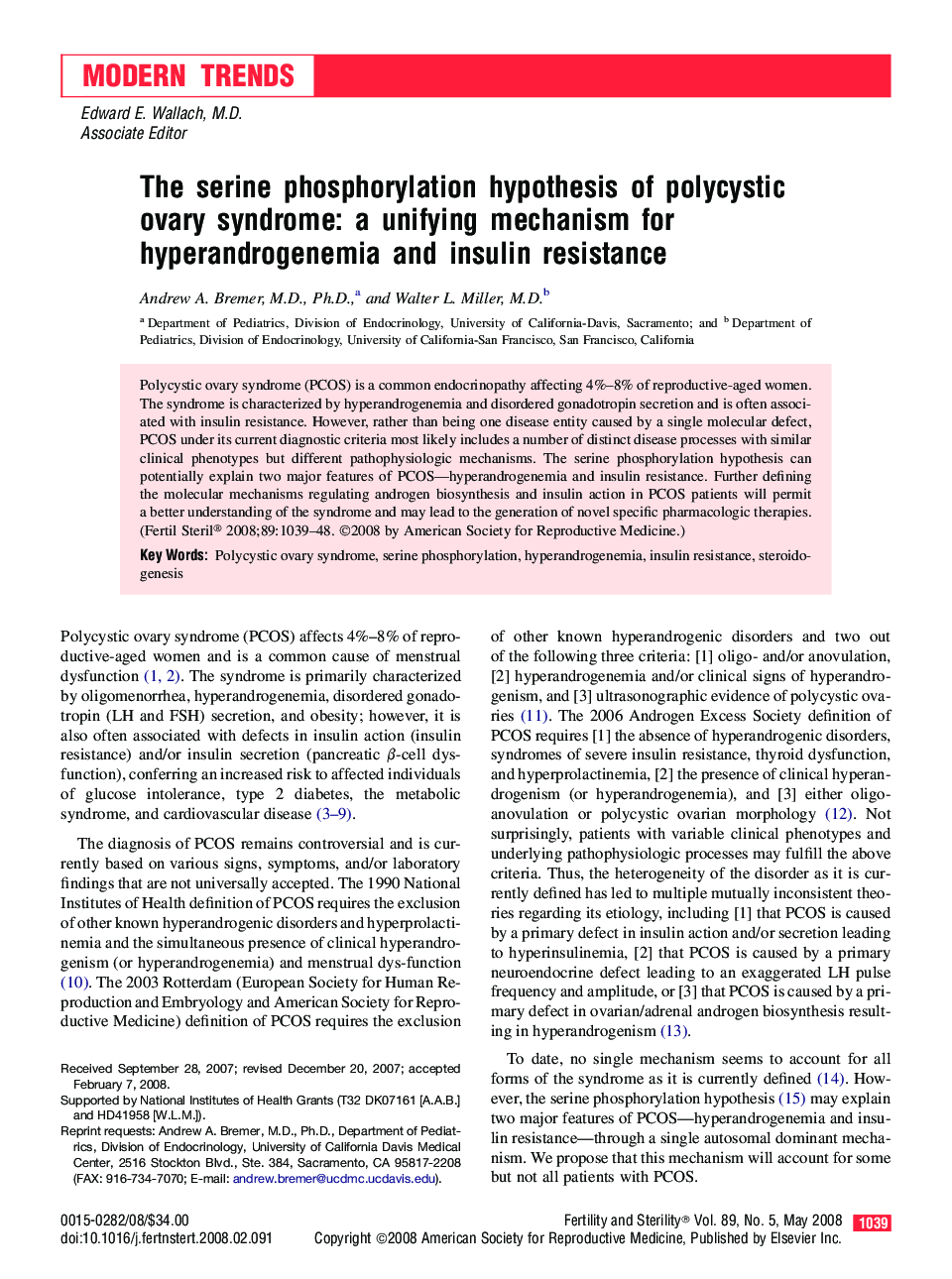| Article ID | Journal | Published Year | Pages | File Type |
|---|---|---|---|---|
| 3941695 | Fertility and Sterility | 2008 | 10 Pages |
Polycystic ovary syndrome (PCOS) is a common endocrinopathy affecting 4%–8% of reproductive-aged women. The syndrome is characterized by hyperandrogenemia and disordered gonadotropin secretion and is often associated with insulin resistance. However, rather than being one disease entity caused by a single molecular defect, PCOS under its current diagnostic criteria most likely includes a number of distinct disease processes with similar clinical phenotypes but different pathophysiologic mechanisms. The serine phosphorylation hypothesis can potentially explain two major features of PCOS—hyperandrogenemia and insulin resistance. Further defining the molecular mechanisms regulating androgen biosynthesis and insulin action in PCOS patients will permit a better understanding of the syndrome and may lead to the generation of novel specific pharmacologic therapies.
